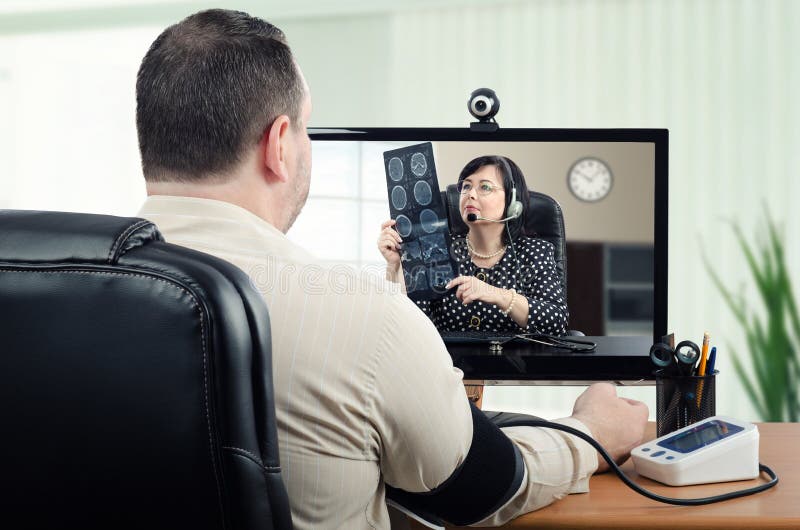Leading Factors to Pick Teledoctors for Telemedicine Solutions
Leading Factors to Pick Teledoctors for Telemedicine Solutions
Blog Article
Teledoctors: Linking the Gap In Between People and Health Care Service Providers
The emergence of teledoctors stands for a significant change in the healthcare landscape, providing remedies to long-standing access concerns encountered by clients and suppliers alike. By incorporating telemedicine right into traditional methods, healthcare systems can reach remote and underserved populaces, providing important clinical assessments without the barriers of range and travel. This standard change not just improves client involvement but also optimizes resource allotment for service providers. Nonetheless, the widespread adoption of teledoctors increases crucial concerns regarding the sustainability of such practices and the effects for future healthcare shipment. What challenges lie in advance in ensuring this model's efficiency and equity?
Increase of Telemedicine

The increase of telemedicine is additionally fueled by the need for economical health care. Medical care systems internationally are under pressure to lower expenditures while maintaining quality care, and telemedicine provides a feasible service. By lessening the requirement for physical gos to, telemedicine minimizes overhead costs for healthcare centers and eventually reduces the monetary worry on individuals.
Furthermore, the COVID-19 pandemic functioned as a driver, accelerating the adoption of telemedicine practices. Social distancing steps and the demand to minimize exposure risk required a shift in the direction of remote assessments, prompting regulative bodies to support and adjust telehealth solutions. This shift has not only proven telemedicine's effectiveness however also its possible to evolve as a staple component of modern health care systems.
Benefits for Clients
As telemedicine continues to reshape health care delivery, patients stand to acquire substantially from this change. Primarily, telemedicine boosts access, enabling patients in underserved or remote areas to consult medical care service providers without the demand for substantial travel. This is particularly helpful for individuals with movement issues or those residing in country regions where healthcare centers could be limited. Telemedicine also uses patients the benefit of receiving clinical guidance and therapy from the convenience of their homes, lowering the moment and price related to taking a trip to a health care facility.
Additionally, telemedicine sustains connection of care by assisting in regular follow-ups and monitoring, which are essential for managing chronic conditions. People can conveniently arrange visits and access health care services outside typical workplace hours, suiting their hectic lifestyles. This flexibility brings about enhanced patient involvement and adherence to therapy strategies, possibly causing far better health results.
In addition, telemedicine can help minimize the danger of infection transmission, an issue heightened by the COVID-19 pandemic. By lessening the requirement for in-person sees, patients can avoid crowded waiting rooms and decrease exposure to contagious diseases. Eventually, telemedicine equips individuals by providing prompt, effective, and individualized health care services.
Benefits for Suppliers
For medical care carriers, telemedicine provides substantial benefits that boost the performance and reach of their method. By leveraging electronic modern technology, companies can expand their services to a more comprehensive group, including those in remote or underserved locations. This not only alleviates geographical obstacles yet also enhances person retention and acquisition by making healthcare extra accessible.
Another key advantage is the decrease in overhead expenses. With telemedicine, the requirement for physical area diminishes, enabling suppliers to conserve on real estate and functional expenses. Additionally, telemedicine helps with much better time administration by minimizing the requirement for travelling and allowing for more flexible scheduling. This versatility can bring about enhanced person examinations per day, thereby enhancing revenue potential.
Telemedicine likewise cultivates a more collective atmosphere for doctor. teledoctors. It makes it possible for smooth sharing of patient info amongst experts, boosting diagnostic accuracy and treatment results. Furthermore, electronic systems look at this website can incorporate with electronic health and wellness records (EHRs), boosting information accuracy and improving management tasks
In addition, telemedicine boosts person fulfillment, which is vital for provider track record and success. By providing convenient and prompt care, companies can enhance patient loyalty and engagement, additionally strengthening the provider-patient partnership.
Conquering Obstacles
While telemedicine uses various benefits for doctor, it also provides challenges that need cautious factor to consider. One considerable challenge is ensuring data privacy and protection. As patient information is transferred digitally, the risk of data violations increases, necessitating robust cybersecurity actions. Doctor have to abide by stringent guidelines like HIPAA other to protect delicate details, thereby calling for investment in secure platforms and ongoing personnel training.
An additional difficulty is the digital divide, which can hinder accessibility to telemedicine services. Not all clients have equal access to the essential technology or web connection, especially those in underserved or country areas. This disparity can worsen existing medical care inequalities, making it vital for companies to check out alternate services, such as collaborations with area companies, to connect this gap.
Furthermore, there are constraints in conducting physical exams remotely. Particular problems require in-person analysis, highlighting the demand for a hybrid design that integrates telemedicine with standard brows through. When telemedicine is suitable and making certain seamless changes in between digital and in-person care., providers should navigate these difficulties by establishing protocols to recognize.
Future of Health Care
The future of medical care is positioned for a transformative development, driven by the rapid integration of technology and technology. Central to this change is the surge of telemedicine, which is redefining just how medical solutions are accessed and supplied. With advancements in electronic interaction, telehealth systems are coming to be a lot more sophisticated, supplying real-time examinations, remote individual monitoring, and personalized care strategies. This not only improves patient ease however additionally expands accessibility to healthcare, specifically in underserved and rural areas.
Synthetic knowledge (AI) and artificial intelligence are additionally readied to play crucial roles. These modern technologies can assess vast quantities of data, offering predictive insights right into individual wellness, improving diagnostic precision, and individualizing treatment strategies. AI-driven devices can enhance healthcare companies' capabilities, leading to even more informed decision-making and better person end results.
In addition, wearable innovation and Web of Medical Points (IoMT) devices are transforming client interaction and proactive wellness administration. These tools allow continuous wellness surveillance, permitting early detection of prompt interventions and possible problems.
As a knockout post these modern technologies continue to advance, they promise to produce a much more effective, easily accessible, and patient-centric medical care system, eventually bridging the space in between patients and health care service providers. - teledoctors
Verdict
Teledoctors are changing healthcare by substantially enhancing availability and performance with remote appointments. This improvement sustains people in underserved areas by giving timely medical suggestions without requiring physical brows through, therefore improving client engagement and continuity of care. Health care service providers take advantage of extra efficient time administration and enhanced partnership opportunities. Regardless of challenges such as technological barriers and regulative issues, the future of healthcare appears increasingly comprehensive and efficient as a result of the combination of telemedicine right into typical care designs.

As telemedicine continues to improve healthcare shipment, people stand to gain substantially from this transformation. Mostly, telemedicine enhances ease of access, permitting patients in underserved or remote locations to speak with medical care service providers without the requirement for considerable travel. Telemedicine likewise uses people the convenience of getting clinical suggestions and treatment from the convenience of their homes, decreasing the time and expense associated with taking a trip to a medical care facility.
Eventually, telemedicine equips people by offering timely, effective, and individualized medical care services.
Report this page